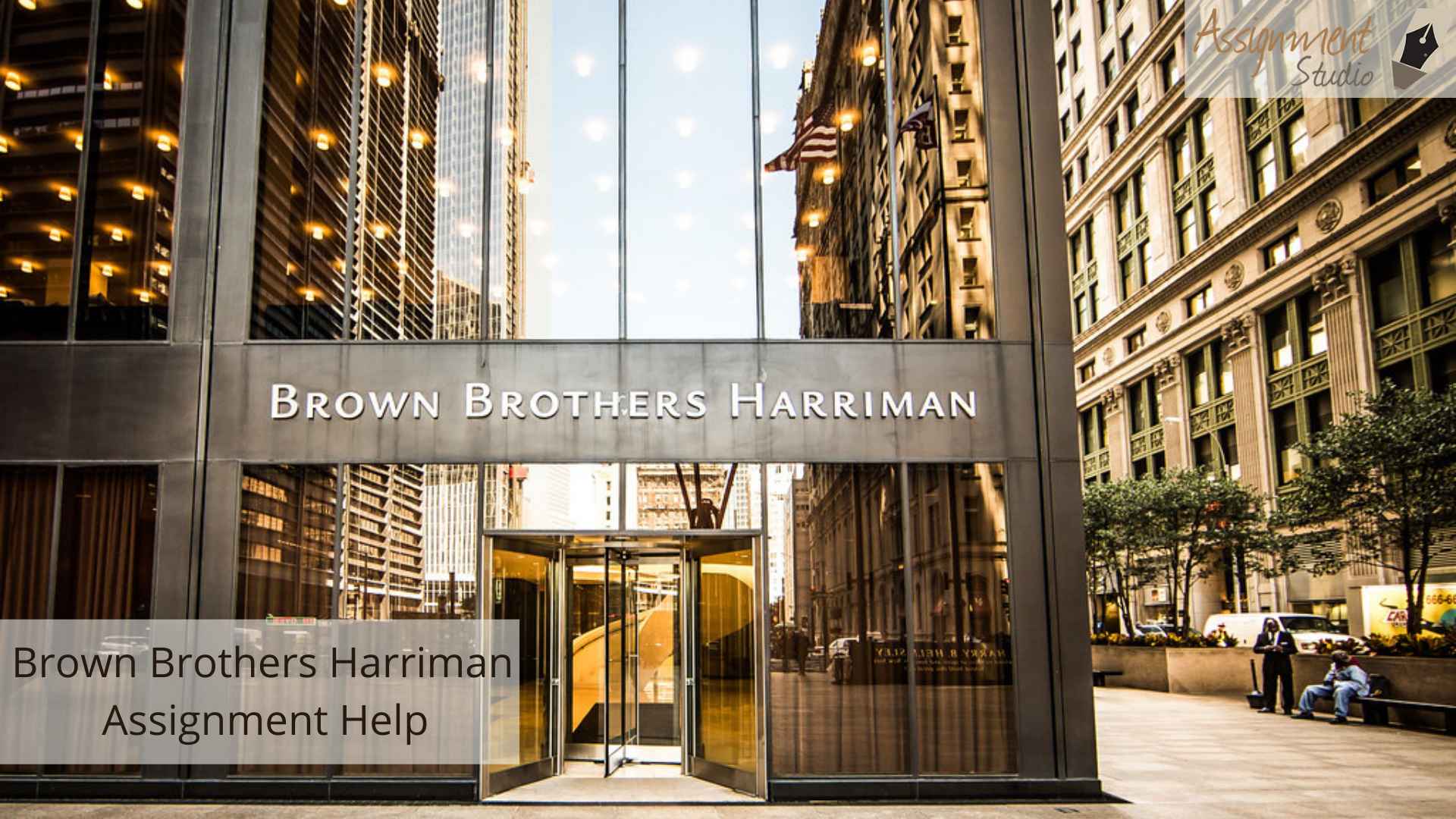Brown Brothers Harriman HR Analysis
Company history
Harriman Brown is an Australian retailer. Its primary business is an Australia-wide chain of premium department stores. It currently has 32 stores located in all Australian states and territories. The chain of traditional department stores retails clothing for men, women and children; cosmetics; kitchenware; sporting goods; electronics as well as some of their own lines. Harriman Brown’s main opposition comes from stores such as David Jones and Myer (now part of the Coles group). Brown Brothers Harriman emigrated from Scotland to Australia in 1947. Brown opened his first stores in South Australia in 1953. By 1969, the store network expanded into eight stores, and by 1980 Harriman Brown had moved into New South Wales, the ACT, Western Australia and then Queensland and had more than 20 stores. The recession of the early 1990s caused Harriman Brown to struggle to keep afloat for a period of approximately two years. The public float of the Harriman Brown chain of stores in 1995resulted in structural and cultural changes that were followed by a period of stagnancy and high staff turnover. Harriman Brown shares at A$1.50 fell as low as A$0.80, but reached highs of over A$4.00 just before the 2008 global financial crisis. Changes in management saw Harriman Brown again falter in the late 1990s. A major strategic review in 2002 saw the closing of a number of its unprofitable stores. It implemented ‘makeovers’ for many of its remaining stores. Since then, its profitability and profile in the marketplace improved, thanks to a combination of a consumer spending boom in 2004-2004 and the securing of exclusive deals with many high-profile and international brands. In late 2004, Harriman Brown acquired six department stores and five kitchenware stores in NSW and the ACT. Recently, a slowdown in the top end department store market has hurt both Harriman Brown and brown brothers Harriman competitors. However, Harriman Brown has weathered and adapted to the massive shift in Australian retailing away from department stores towards specialist retailers and suburban shopping malls and grown stronger as a result.
In recent years, the chain has expanded to include household furnishings and other items for the home. The long-term goal of the company is to become the leading chain of department stores in Australia, selling moderate to higher-priced merchandise to middle-class, fashion-conscious consumers. Its largest and most successful store is located in Adelaide and has 350 employees. The company is highly decentralized and maintains a relatively small corporate office that is also located in Adelaide
Meeting retail industry challenges of the and early 21st century
Harriman Brown, along with other traditional department stores, has experienced the impact of several changes in the retail industry. Once, the success of stores such as Harriman Brown’s was based on a strategy of being “all things to all people”. However, the modern consumer is frequently seeking both value and style or distinctiveness. Megastores and giant discounters have emerged in the marketplace. The retail industry also faces the challenge of retaining competent and motivated customer service staff and effective managers. Desmond Brooks, CEO of Harriman Brown, describes the company’s strategic challenges for the next three-to-five year period: “We simply can’t continue with the same old strategies that gave us a reputation for good value. We need to reposition ourselves by offering exciting (and preferably exclusive) brand names, excellent customer service, and achieve increase sales. We need sales/customer service personnel who have intimate knowledge of our products and who understand consumer preferences. Buying expertise is also crucial because fashions and consumer tastes don’t remain the same’. Brooks has identified four key strategic goals for Harriman Brown:

- Convert unproductive store space into revenue-generating selling space through better merchandising and promotion.
- Continue to invest aggressively in private brands.
- Reduce costs through the use of information technology to better predict sales and to more effectively manage inventory.
- Improve the effectiveness and productivity of customer service representatives, buyers and department heads.
Desmond Brooks was appointed CEO of Harriman Brown in 2007. Brooks has excellent formal business qualifications and extensive managerial experience at senior levels in the retail industry. Brooks wants to take a much more planned and strategic approach to mapping Harriman Brown’s future. As part of this approach, Brooks has engaged a management consultant to independently asses the company’s strengths and weaknesses. Brooks is a genuine believer that, together with well thought out strategies and objectives, the quality and performance of staff will be key to the future success of Harriman Brown. The consultant’s evaluation of the company commenced with a review of Harriman Brown’s HR function.
The consultant used a combination of approaches to gain an insight into HR including interviewing a number of HR managers. The consultant also spoke with other key managers at the store level. HR and other managers were then required to respond to a questionnaire that called for their opinions or views about the responsibilities of the HR function. Respondents were given a ist of HR responsibilities and asked to rate their importance to store performance using a scale of 1(unimportant) to 5(extremely important). The responses were aggregated from all stores. The numbers in the table represent the average ratings for each area of HRM. The questionnaire was completed by all human resource managers and store managers at each store.
Results of questionnaire by HR managers and non-HR managers
|
HR Responsibilities |
HR Managers |
Store Managers |
|
Staffing |
4.75 |
4.75 |
|
Training and development |
3.25 |
4.5 |
|
Performance Management |
4.25 |
4.0 |
|
Remuneration |
3.0 |
3.5 |
|
OHS |
3.5 |
2.5 |
|
Business knowledge |
2.25 |
4.5 |
|
Change management |
2.5 |
4.75 |
The Northbridge Store
The HR manager at the company’s Northbridge store is Barbara McLean who has been in this role for almost five years. Before joining Harriman Brown, Barbara had worked in the retail industry for a number of years. At the time she applied for the HR manager position at Harriman Brown, Barbara was employed as a buyer at one of Harriman Brown’s chief competitors. McLean has a diploma in sales and merchandising from a TAFE college in Sydney. At the present time 350 people are employed at the Northbridge store. Personnel at the Northbridge store include managers, customer service and sales support staff plus store security and maintenance staff. During the busy holiday periods, a number of people are employed as supernumerary customer service and sales support staff. The casual employees may number around 90. The HR department is comprised of five people.
The role of human resource manager
McLean explained that business had grown appreciably in the last few years. Attempts to attract customers with higher disposable incomes to purchase designer label and speciality apparel lines had been very successful. Soon after she had been appointed, Barbara discovered that too many HR activities were being carried out by the Manager of Store Operations, Frank Davey, and a department head, Robert Wilkins. Since then, Barbara has developed HR policies and procedures that more clearly defined the HR department’s areas of responsibility and that resulted in the recruitment of staff that matched the store’s needs more closely. Barbara stated that ‘most of my time is now taken up with simply managing the HR department. I think it is necessary to keep informed about the performance of your team members, and as a consequence I like to regularly observe their work habits. In addition, I also allocate a lot of time to selecting applicants for the customer service and sales support positions. The business experiences high turnover from the sales floor. The typical customer service representative at Harriman Brown is either part-time, an older employee or someone who is really looking for a preferred appointment, i.e. is using the current role as a stop-gap measure only and is just waiting for that better opportunity to come along. To illustrate the problem of staff turnover, of the 70 part-time people employed in the last six months, 36 have departed.’
McLean proceeded to outline the selection methods that were used: ‘The most significant sources of job applicants are word-of-mouth by current or previous employees and advertisements placed in community newspapers. Applicants are selected primarily on how well they perform during face-to-face interview’. Barbara indicated that every week she was personally involved in conducting around 30 interviews. This workload increased during the peak holiday periods.
‘I have sufficient retail experience to appreciate what is required to undertake the role of customer service representative satisfactorily. Much emphasis is placed on personal attributes including self motivation or drive and determination. Information such as high school or college performance or written references I have not found to be particularly helpful. However, I do study their applications and resumes for evidence of a stable employment history.

Hire Expert Writers at
Affordable Price
WhatsApp
Get Assignment Help



